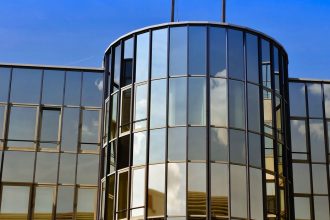Sustainable Living: How Eco-Real Estate is Reshaping Communities
Sustainable living is no longer just a trend; it has become a necessity as we confront the consequences of climate change and resource depletion. One of the most impactful ways to move toward sustainable living is through eco-real estate—an innovative approach to real estate development that prioritizes environmental responsibility, social equity, and economic viability. Through initiatives such as the Living Building Challenge and new practices in green building design, eco-real estate is reshaping communities and promoting a more sustainable future.
The Emergence of Eco-Real Estate
Eco-real estate, also known as sustainable or green real estate, focuses on reducing the ecological footprint of buildings and communities. Key principles often include the use of renewable energy, water conservation, sustainable materials, and designs that enhance the natural ecosystems around them. This paradigm shift is facilitated by evolving consumer preferences, advancements in technology, and the growing recognition of the need for climate resilience.
Innovative Practices in Green Building Design
Eco-real estate is harnessing innovative practices in building design that are revolutionizing the industry. Here are some key features and practices:
-
Energy Efficiency and Renewal Energy Systems:
- Passive Design: Buildings are often designed with passive solar heating, natural ventilation, and strategic window placements to minimize energy consumption.
- Solar Panels: Many eco-real estate projects integrate solar photovoltaic systems, allowing buildings to generate their own energy.
- Energy Management Systems (EMS): Emerging technology enables real-time monitoring and regulation of energy usage, enhancing efficiency.
-
Water Management:
- Rainwater Harvesting: Collecting and reusing rainwater reduces reliance on municipal water supply, especially in water-scarce regions.
- Graywater Systems: These systems recycle water from sinks, showers, and washing machines for landscape irrigation, reducing wastewater.
-
Sustainable Materials and Construction Techniques:
- Locally Sourced Materials: Using local materials reduces transportation emissions and supports local economies.
- Recycled and Upcycled Materials: Incorporating materials that have been reclaimed or repurposed minimizes waste and resource extraction.
- Low-Impact Development (LID): This approach utilizes natural processes for stormwater management, such as green roofs and permeable pavements.
-
Biophilic Design:
- Biophilic design emphasizes the connection between humans and nature. This can include green walls, natural light, open spaces, and outdoor areas that create a calming environment and enhance biodiversity.
- Smart Technology:
- Intelligent building technology allows for adaptive environments that can monitor and adjust heating, cooling, and lighting based on usage patterns, further increasing energy efficiency.
The Living Building Challenge
One of the most prestigious and rigorous frameworks for sustainable building design is the Living Building Challenge (LBC). Established by the International Living Future Institute, the challenge is structured around a set of performance standards that buildings must meet over the course of 12 months of occupancy.
Key features of the Living Building Challenge:
-
Seven Petals of Performance: The LBC is centered on seven performance areas—Place, Water, Energy, Health & Happiness, Materials, Equity, and Beauty—that aim for projects to operate as a net-positive building, meaning they generate more energy and clean water than they consume.
-
Net-Zero Energy: Buildings are designed to achieve net-zero energy and are required to demonstrate that their energy needs are met through renewable sources.
-
Water Independence: Projects must treat all wastewater on-site and collect rainwater, resulting in a self-sufficient water system.
- Materials Health: The use of non-toxic materials is crucial, which includes adhering to the Red List—an inventory of materials that should be avoided due to their negative impact on human health and the environment.
Eco-Real Estate and Community Resilience
The impact of eco-real estate transcends the physical structure of buildings; it also fundamentally reshapes communities. Eco-friendly developments often prioritize proximity to public transit, walkable neighborhoods, and communal spaces that foster social interaction, all of which contribute to building vibrant, resilient communities.
Conclusion
As the world faces the dual challenges of climate change and urbanization, the development of eco-real estate represents a crucial stepping stone toward sustainable living. With innovative practices in green building design and frameworks like the Living Building Challenge paving the way, real estate developers are redefining standards and creating spaces that not only accommodate human needs but also enhance and protect the environment. As communities embrace these progressive real estate models, they can look forward to healthier, more resilient, and sustainable living environments for generations to come.
References
- International Living Future Institute. (n.d.). The Living Building Challenge. Retrieved from living-future.org
- U.S. Green Building Council. (n.d.). Leadership in Energy and Environmental Design (LEED). Retrieved from usgbc.org
- World Green Building Council. (n.d.). What is Green Building? Retrieved from worldgbc.org
- Benighted, J., & Knuth, G. (2019). Sustainable Development and Urban Resilience. Environmental Progress & Sustainable Energy, 38(3), 1-15.







